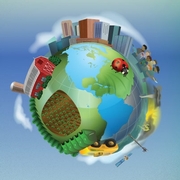2020 Northeast Integrated Pest Management Research Update Conference
Recorded November 17, 2020
The 2020 Northeast IPM Research Update Conference, hosted by the Northeastern IPM Center (NEIPMC), featured updates from active projects funded by the NEIPMC’s Partnership Grants Program and from IPM-related projects funded through the Northeast Sustainable Agriculture Research and Education (NE SARE) Program and USDA-NIFA’s Applied Research and Development Program (ARDP) and Extension Implementation Program (EIP).
The rapid style conference featured 5-minute prerecorded presentations in which the speakers discussed one or two highlights from their projects followed by a live Q&A. The purpose of the conference was to increase collaboration and awareness about current IPM-related research and extension in the Northeast in a fun way.
Give us your feedback—take a short survey about the IPM Online Conference so we can make improvements for next year.
Conference Agenda
| Time | Speaker (project funded by) – “Title of project” – Affiliation |
|---|---|
| 10:30 a.m. | Juliet Carroll – “Building a responsive network of IPM apps to support grower access” (ARDP) – New York State IPM Program |
| 10:35 a.m. | Michael Wolfin – “Development of eaves tubes as a new pest management tactic for IPM of mushroom flies” – Penn State |
| 10:40 a.m. | Q&A Discussion |
| 10:45 a.m. | Long He – “Canopy density measurement for precision spraying in fruit orchards” (ARDP) – Penn State |
| 10:50 a.m. | Samantha Willden – “The use of photoselective plastics for IPM on low tunnel strawberry” (NE SARE) – Cornell University |
| 10:55 a.m. | Q&A Discussion |
| 11:00 a.m. | Susan Scheufele – “Updates from the Brassica Pest Collaborative” (NE SARE) – UMass Extension |
| 11:05 a.m. | Demian Nunez – “Developing a perennial living mulch system to manage insect pests in Northeastern cantaloupe fields” – University of Maryland |
| 11:10 a.m. | Q&A Discussion |
| 11:15 a.m. | Diane Zlotnikov – “Asparagopsis as a methane reducing and nutritionally beneficial supplement for organic sheep” (NE SARE) – Zfarms Organic |
| 11:20 a.m. | Glen Koehler – “Some new weather resources for IPM in the Northeast” – University of Maine Cooperative Extension |
| 11:25 a.m. | Q&A Discussion |
| 11:30 a.m. | End of conference – Recorded presentations available online (www.NortheastIPM.org) |
Questions and Comments from the Chat
For Juliet Carroll
Susan Scheufele: Just want to say thanks for making the NEWA site more user-friendly, Julie! I am VERY excited about this new dashboard, especially not having to select my site over and over again! : )
Juliet Carroll: When you login and set up your NEWA Dashboard and then close the NEWA browser session, you won’t have to login again. You’ll go straight to your NEWA Dashboard; it’ll remember you. (unless you log out)
Samantha Willden: Can historical weather data be downloaded from NEWA?
Juliet Carroll: Yes, historical data can be downloaded from NEWA. Currently, it’s a cut/paste method. Go to the Hourly or Daily Summary Data menu and select the location and dates of interest and copy/paste into an Excel file. Data is in monthly increments. On the new website, you will be able to download data as a CSV file, either from a tool to capture the tool’s Results or from the Weather Tools. NEWA’s new downloads will be date delimited so as to not tie up too much bandwidth with hourly data downloads, as might occur if someone wanted two years of hourly data which could be over 140,000 data variables.
For Michael Wolfin
Morgan Dube: I’m in New Hampshire and I know we have one or two mushroom farms (I think). Are there resources available to them that I could point them to?
Michael Wolfin: We have a factsheet for this pest, but I’m updating it now.
Morgan Dube: Would they be able to utilize your hotline?
Michael Wolfin: Yes Morgan, they can feel free to use the hotline, I’m happy to chat with them.
For Long He / Md Sultan Mahmud
Glen Koehler: The difference between LIDAR and previous smart sprayer tech is 3D vs 2D visualization of canopy, correct?
Md Sultan Mahmud: The main difference is to accurately locate the tree canopy that helps in reducing off-target deposition of agrochemicals. We have 3D coordinates of each canopy points that precisely locate tree canopy points.
For Samantha Willden
Peter Jentsch: What were the two strains of B. bassiana used in the trial. Was there a difference between the strains regarding efficacy on TPB and survival of B. bassiana.
Samantha Willden: I used GHA (Mycotrol) and ANT-03 (BioCeres). There was no difference in efficacy when comparing pure spore solutions. However, the Mycotrol product had higher spore density in the formulation, so I would recommend that product over BioCeres.
Laura McDermott: Thank you Samantha—great work!

